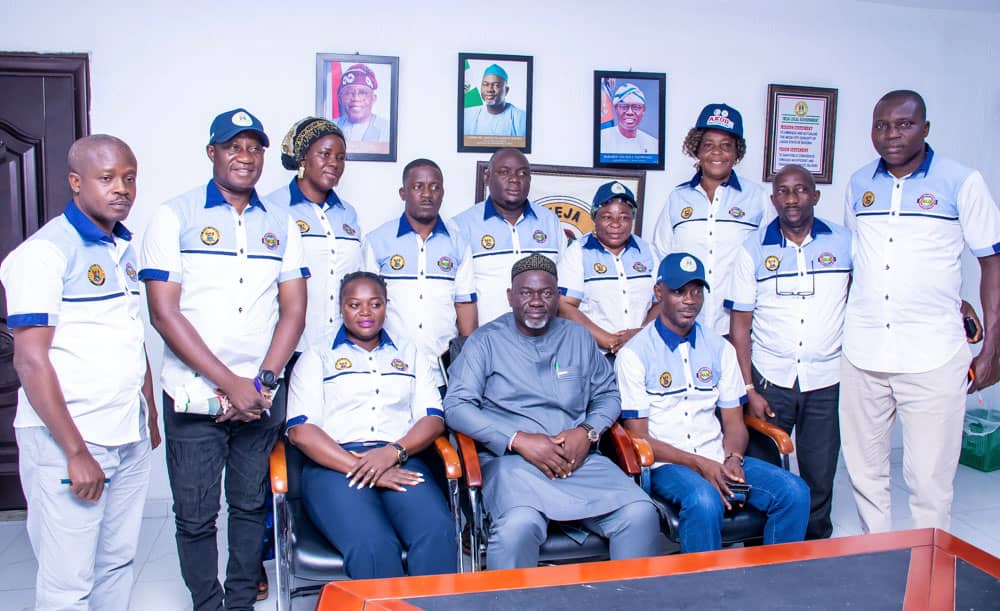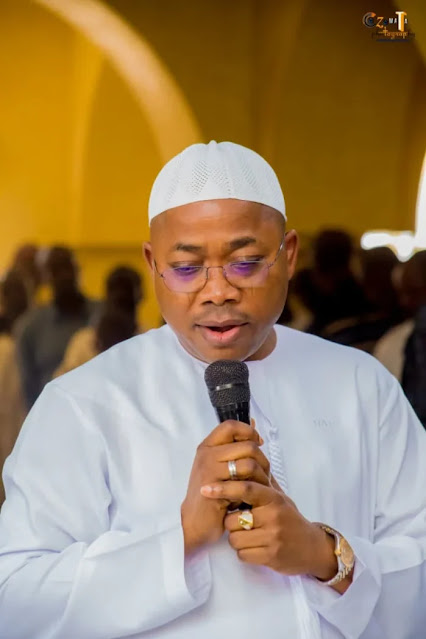In a move to bolster infrastructure development in Bayelsa State, Governor Douye Diri has issued a directive to the Ministry of Works and Infrastructure, alongside contractors handling the Ekeremor-Agge road project, to expedite construction efforts to ensure the timely completion of this critical transportation artery. The directive came during an inspection tour of the ongoing first phase of the 27.8-kilometer road project, which stretches from Ekeremor town to Ndoro, with a spur connecting to the Peretorugbene community. This ambitious project is poised to transform connectivity, economic activity, and accessibility in one of Nigeria’s most challenging terrains, characterized by its swampy and flood-prone geography.
The Ekeremor-Agge Road: A Vision for Connectivity
The Ekeremor-Agge road is a flagship infrastructure project for the Bayelsa State government, aimed at addressing longstanding challenges in transportation and economic development in the region. Bayelsa, located in the heart of the Niger Delta, is known for its complex topography, with vast expanses of wetlands, rivers, and creeks that make road construction a formidable task. The state’s coastal communities, such as Agge, have historically been isolated due to the lack of reliable road networks, forcing residents to rely heavily on water transportation, which is often costly and time-consuming. The Ekeremor-Agge road is envisioned as a game-changer, connecting remote communities to urban centers, facilitating trade, and improving access to essential services such as healthcare and education.
The first phase of the project, spanning 27.8 kilometers, is a critical step toward realizing this vision. Starting from Ekeremor town, the road extends to Ndoro, with an additional spur branching off to Peretorugbene, a community that has long been underserved in terms of infrastructure. The project is being executed by two reputable construction firms, Pelfaco Limited and Lubrik Construction Company, under the supervision of the Bayelsa State Ministry of Works and Infrastructure. The road is designed to withstand the region’s environmental challenges, including frequent flooding, with its elevation set at 2.4 meters to ensure durability and functionality even during the rainy season.
Governor Diri’s Inspection and Call for Speed
During his inspection of the project site, Governor Diri expressed a mixture of satisfaction and urgency. Approximately seven kilometers of the road have already been sand-filled, a significant milestone given the difficult terrain. Sand-filling is a crucial preliminary step in road construction in the Niger Delta, where the soft, marshy soil requires stabilization before asphalt can be laid. The governor commended the contractors for the progress made but emphasized that the pace of work must be accelerated to meet the project’s timeline.
“The progress here is encouraging, but we cannot afford to rest on our laurels,” Governor Diri stated during the inspection. “I have directed the Ministry of Works and the contractors, Pelfaco Limited and Lubrik Construction Company, to double their efforts in both sand-filling and actual road construction. Our target remains clear: to reach Ndoro in this first phase. Future administrations will take up the task of extending the road to Agge, but we must lay a solid foundation now.”
The governor’s directive reflects his administration’s commitment to delivering transformative infrastructure projects that will outlast his tenure. By setting a clear target of reaching Ndoro, Governor Diri is ensuring that the project achieves tangible results within a defined timeframe, while also leaving room for future expansions to connect even more remote communities like Agge, a coastal settlement with significant economic potential due to its proximity to the Atlantic Ocean.
Addressing Initial Delays
Governor Diri also shed light on the reasons behind the initial delays in the project’s progress. He explained that the state government had initially planned to inaugurate the Sagbama-Ekeremor road, a related infrastructure project, before commencing work on the Ekeremor-Agge stretch. Additionally, there were discussions with the Federal Government regarding a potential partnership to extend the road network. However, the Sagbama-Ekeremor axis has yet to be commissioned, prompting the state government to shift focus and initiate fresh work on the Ekeremor-Agge road.
“Sometimes, you have to adjust your plans based on realities on the ground,” the governor noted. “We had hoped to tie the Ekeremor-Agge project to the commissioning of the Sagbama-Ekeremor road and explore federal collaboration. But with those plans still pending, we decided to move forward independently to ensure that our people begin to see the benefits of this road as soon as possible.”
This pragmatic approach underscores Governor Diri’s determination to deliver results despite external challenges. By prioritizing the Ekeremor-Agge road, his administration is demonstrating a commitment to addressing the immediate needs of Bayelsa’s residents while keeping long-term development goals in sight.
Technical Details and Project Timeline
The Commissioner for Works and Infrastructure, Moses Teibowei, provided further insights into the technical aspects of the project during the inspection. He expressed confidence that the two-year completion timeline for the first phase is achievable, given the contractors’ full mobilization and the state government’s support. “The contractors are on the ground, and we have ensured that all necessary resources are available to them,” Teibowei stated. “We are confident that we can deliver this road within the stipulated timeframe.”
The project includes the construction of two significant bridges: an 80-meter bridge to Ndoro and a 150-meter bridge to Peretorugbene. These bridges are critical components of the road network, as they will facilitate seamless connectivity across the region’s numerous waterways. The inclusion of these bridges highlights the complexity of the project and the state government’s commitment to building infrastructure that is both functional and resilient.
Kazeem Ajala, a representative of Pelfaco Limited, provided additional details on the construction process. He assured the governor that sand-filling to Ndoro would be completed by April of the following year, after which full-scale road construction would commence. “We are working diligently to meet the project milestones,” Ajala said. “The road is being constructed at an elevation of 2.4 meters to ensure it can withstand flooding, which is a major challenge in this region. We are committed to delivering a road that meets the highest standards and adheres to the contract specifications.”
The design of the road, with its elevated structure, is a testament to the state government’s forward-thinking approach to infrastructure development. By prioritizing flood resistance, the project aims to provide a reliable transportation route that can serve the people of Bayelsa year-round, regardless of seasonal weather changes.
Economic and Social Impacts
The Ekeremor-Agge road project holds immense promise for the economic and social development of Bayelsa State. For communities like Ndoro and Peretorugbene, which have long been cut off from mainstream economic activities due to their remote locations, the road represents a lifeline. Improved connectivity will enable residents to access markets, healthcare facilities, and educational institutions with greater ease, thereby enhancing their quality of life.
The road is also expected to stimulate economic activity by facilitating the transportation of goods and services. Agge, in particular, is a community with significant potential for growth, given its strategic location along the coast. The completion of the road to Agge in future phases could position the town as a hub for fishing, trade, and other maritime activities, potentially attracting investment and creating jobs.
Moreover, the project aligns with broader national and regional goals of improving infrastructure in the Niger Delta. The region has historically been underserved in terms of road networks, despite its critical role in Nigeria’s oil and gas industry. By investing in projects like the Ekeremor-Agge road, the Bayelsa State government is contributing to the federal government’s efforts to bridge the infrastructure gap and promote inclusive development.
Challenges and Mitigation Strategies
While the Ekeremor-Agge road project is a beacon of hope for Bayelsa’s residents, it is not without its challenges. The Niger Delta’s unique environmental conditions, including its swampy terrain and susceptibility to flooding, pose significant obstacles to road construction. Additionally, the high cost of building infrastructure in such an environment requires substantial financial resources and technical expertise.
To address these challenges, the state government has partnered with experienced contractors like Pelfaco Limited and Lubrik Construction Company, both of which have a track record of delivering quality projects in difficult terrains. The decision to elevate the road to 2.4 meters is a proactive measure to mitigate the impact of flooding, while the inclusion of bridges demonstrates a commitment to overcoming geographical barriers.
Another challenge is the need for sustained funding to ensure the project’s completion. Infrastructure projects of this magnitude require significant investment, and any disruptions in funding could delay progress. Governor Diri’s administration has prioritized resource allocation for the project, and the full mobilization of contractors suggests that financial constraints are being managed effectively at this stage.
Community engagement is also critical to the project’s success. The state government must ensure that local residents are informed about the project’s benefits and involved in its implementation where possible. This could include providing job opportunities for local youth or addressing any environmental concerns that may arise during construction. By fostering a sense of ownership among communities, the government can ensure that the road is embraced as a shared asset.
Looking Ahead: A Legacy of Development
As the Ekeremor-Agge road project progresses, it is poised to become a cornerstone of Governor Diri’s legacy in Bayelsa State. The road represents more than just a physical connection between communities; it is a symbol of hope, progress, and resilience in a region that has faced significant developmental challenges. By prioritizing timely delivery and quality construction, the governor is laying the groundwork for a more connected and prosperous Bayelsa.
The completion of the first phase to Ndoro will mark a significant milestone, but the ultimate goal of extending the road to Agge remains in sight. Future administrations will have the opportunity to build on this foundation, bringing the benefits of modern infrastructure to even more communities in the state.
In conclusion, Governor Douye Diri’s directive to accelerate work on the Ekeremor-Agge road underscores his administration’s commitment to transformative infrastructure development. With approximately seven kilometers already sand-filled, two bridges under construction, and a clear timeline for completion, the project is on track to deliver tangible benefits to the people of Bayelsa. As the contractors and the Ministry of Works intensify their efforts, the dream of a fully connected Bayelsa is steadily becoming a reality, promising a brighter future for generations to come.






